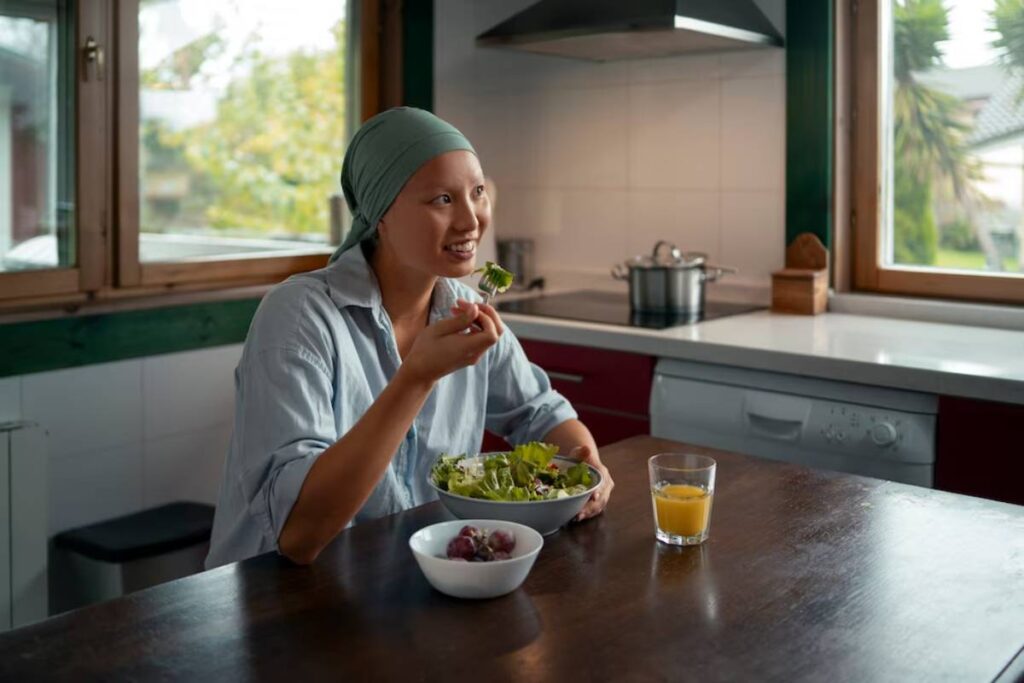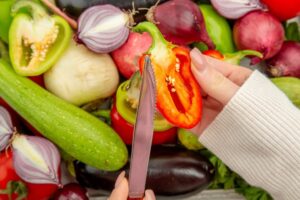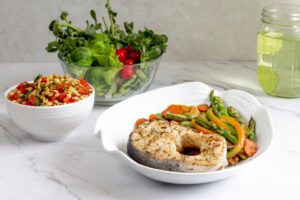The Health & Wellness Blog

Traditional Asian Diets and Inflammation: A Nutritional Blueprint for Longevity
It’s no wonder that traditional Asian cuisines — from aromatic Thai basil to warm miso soup — offer both flavour and nutrition. These diets have long documented history of promoting good health, particularly in inflammation reduction.
You eat more processed ingredients in modern lifestyles, but it still matters what traditional Asian diets you used to have.” They centre around fresh vegetables, anti-inflammatory spices, plant proteins and fermented foods. This helps them take charge of chronic inflammation, a major driver in many diseases.
Let’s explore how the food traditions of East and Southeast Asia help reduce inflammation and promote wellness.
Why It Matters: The Link Between Inflammation and Chronic Disease
This causes a lot of health issues (diabetes, asthma, heart issues) due to chronic inflammation. These can include arthritis, diabetes, heart disease and some cancers. Chronic inflammation is accumulative over time. This is distinct from acute inflammation , a rapid response to injury. It is often aggravated by the diet, stress, toxins and lack of exercise.
Balance, moderation and whole foods are important in traditional Asian diets. They contain anti-inflammatory ingredients such as turmeric, ginger, seaweed, green tea and legumes. These aid in regulating the immune system and reducing inflammation at the cellular level.
Key Benefits of Traditional Asian Diets for Inflammation Control
1. Plant-Centric Meals
In countries like Japan, China, Korea, Vietnam, and India, vegetables are central to meals. Leafy greens, root vegetables, mushrooms, and cruciferous veggies like bok choy and cabbage are packed with antioxidants and fibre. They combat oxidative stress and support gut health.

2. Abundant Anti-Inflammatory Herbs and Spices
Traditional Asian cooking relies on a natural pharmacy of herbs and spices instead of heavy fats or sugars:
- Ginger: Contains gingerol, known for its anti-inflammatory effects.
- Turmeric: Common in South Asian dishes, curcumin can reduce joint and systemic inflammation.
- Garlic, scallions, and shallots: These aromatics boost immune function and lower inflammatory markers.
3. Fermented Foods for Gut Health
Healthy digestion is key to controlling inflammation. Asian diets often feature fermented foods rich in probiotics:
- Kimchi (Korea)
- Natto and miso (Japan)
- Fermented soy products like tempeh (Indonesia) or dosa batter (India)
These foods help create a diverse gut microbiome. This diversity is important for controlling immune response and inflammation.
4. Tea Culture and Hydration
Green tea, oolong, and herbal infusions, like chrysanthemum tea, do more than refresh you. They also provide health benefits. Green tea has EGCG, a powerful antioxidant that helps control inflammation and boost metabolic health.
Culinary Traditions That Support Inflammation Reduction
Balanced Meal Composition
Traditional Asian diets embody the principle of yin and yang, promoting balance in meals. A typical meal includes:
- A variety of cooked and raw vegetables
- A small portion of rice or noodles
- Lean protein (tofu, fish, or chicken)
- A fermented or pickled side dish
- Broth-based soup for hydration and digestion
This approach ensures an optimal mix of fibre, healthy fats, and nutrients in each meal.
Minimal Use of Red Meat and Dairy
Traditional Asian cultures rarely consume large amounts of red meat and dairy. This naturally lowers saturated fat intake and reduces pro-inflammatory compounds.

Cooking Methods That Preserve Nutrients
Asian cuisines often use steaming, boiling, and stir-frying with little oil. These methods help preserve nutrients and limit harmful compounds found in charred or deep-fried foods.
Additional Expert Tips & Common Mistakes to Avoid
Expert-Backed Strategies
- Prioritise variety: Use different vegetables for unique antioxidants and anti-inflammatory benefits.
- Use real spices: Fresh ginger, turmeric root, and garlic are more beneficial than their processed forms.
- Control sodium levels: Soy sauce, fish sauce, and miso add umami but can be high in sodium. Opt for low-sodium versions or dilute with water.
Common Pitfalls to Watch Out For
- Many modern Asian foods, such as instant noodles, often have MSG, preservatives, and unhealthy fats.
- Overeating white rice: While a staple, large servings can spike blood sugar. Mix with brown rice, barley, or quinoa for added fibre.
- Deep-fried dishes: Though common, these should be occasional treats, not daily meals.
Advanced Insights and Expert Recommendations
The Role of Traditional Chinese Medicine (TCM) and Ayurveda
Both TCM and Ayurveda see food as medicine. These systems encourage anti-inflammatory diets. They choose “cooling” or “heating” foods based on what each person needs.
For example:
- Ayurveda promotes turmeric milk (golden milk), warm stews, and spices like fennel to soothe internal fire.
These approaches consider food’s relation to seasonal needs, digestion, and mental health.
Functional Ingredients Worth Highlighting
- Seaweed: Rich in iodine, magnesium, and antioxidants. It helps thyroid health and cuts down oxidative stress.
- Shiitake mushrooms have beta-glucans and lentinan. These compounds help boost the immune system and reduce inflammation.
- Lotus root is popular in Chinese and Japanese dishes. It’s high in fiber and polyphenols. This helps soothe the digestive tract and reduces inflammation.
The Gut Connection: Fermented Foods and Microbiome Health
A healthy gut microbiome helps fight inflammation. Regularly eating fermented foods like kimchi, miso, and pickled veggies can:
- Strengthen the intestinal lining
- Produce anti-inflammatory short-chain fatty acids (SCFAs)
- Improve nutrient absorption and immune response
Including just one fermented food per day can support digestion and lower inflammation.
Timeless Nutrition for Modern Wellness
In our fast-food era, traditional Asian cuisines teach us that health is found in simplicity and balance. They teach us to treat food with reverence, as medicine.
Eating more plant-based, nutrient-dense and anti-inflammatory foods from these traditions is a nod to honour your culture. And it is good for long-term health, too. Every meal can participate in healing: green tea, miso soup, turmeric, and ginger.
Start small. Include steamed greens with garlic, replace red meat with tofu and veggies, or replace soda with jasmine tea. These small changes can lead to big results over time.









